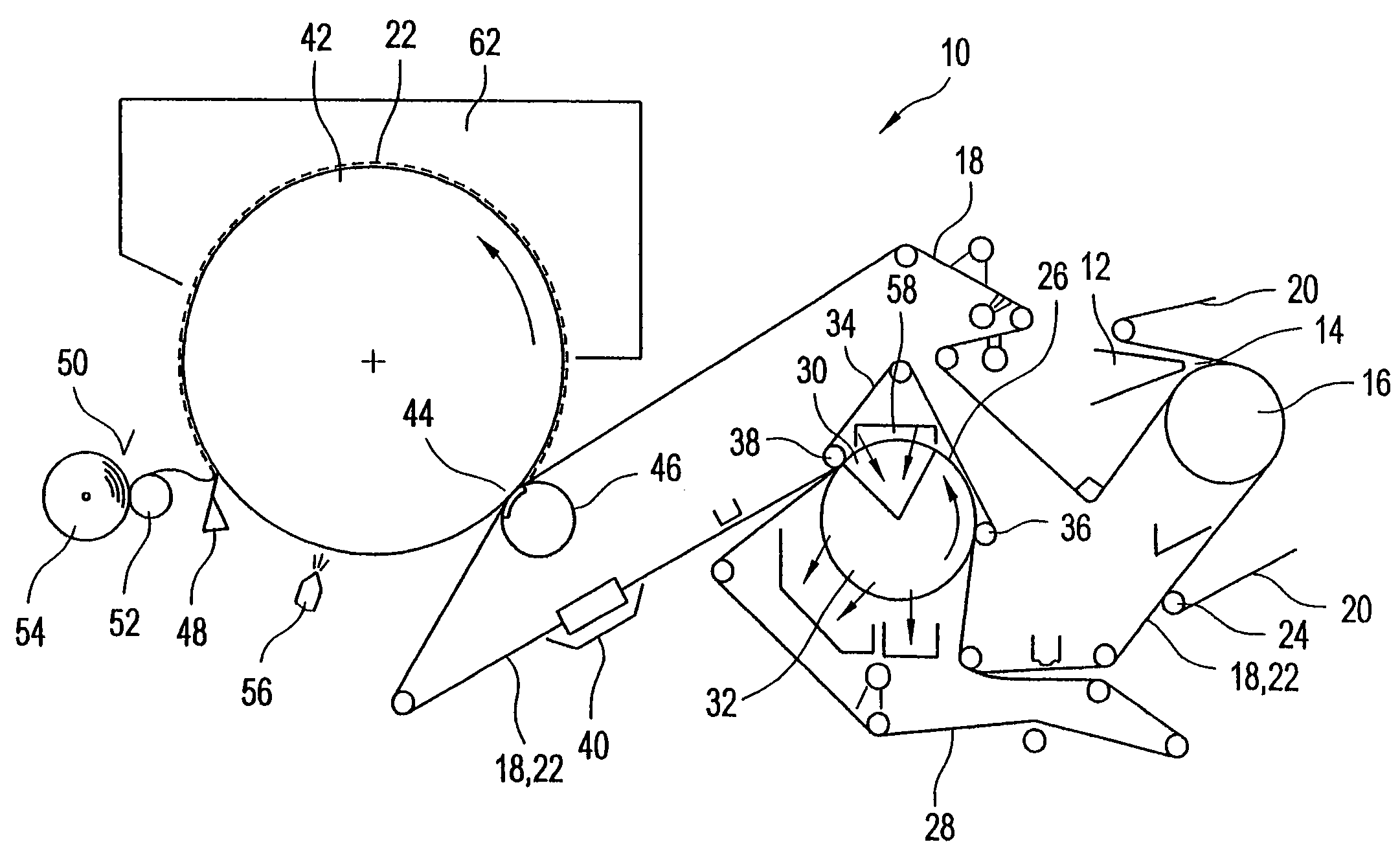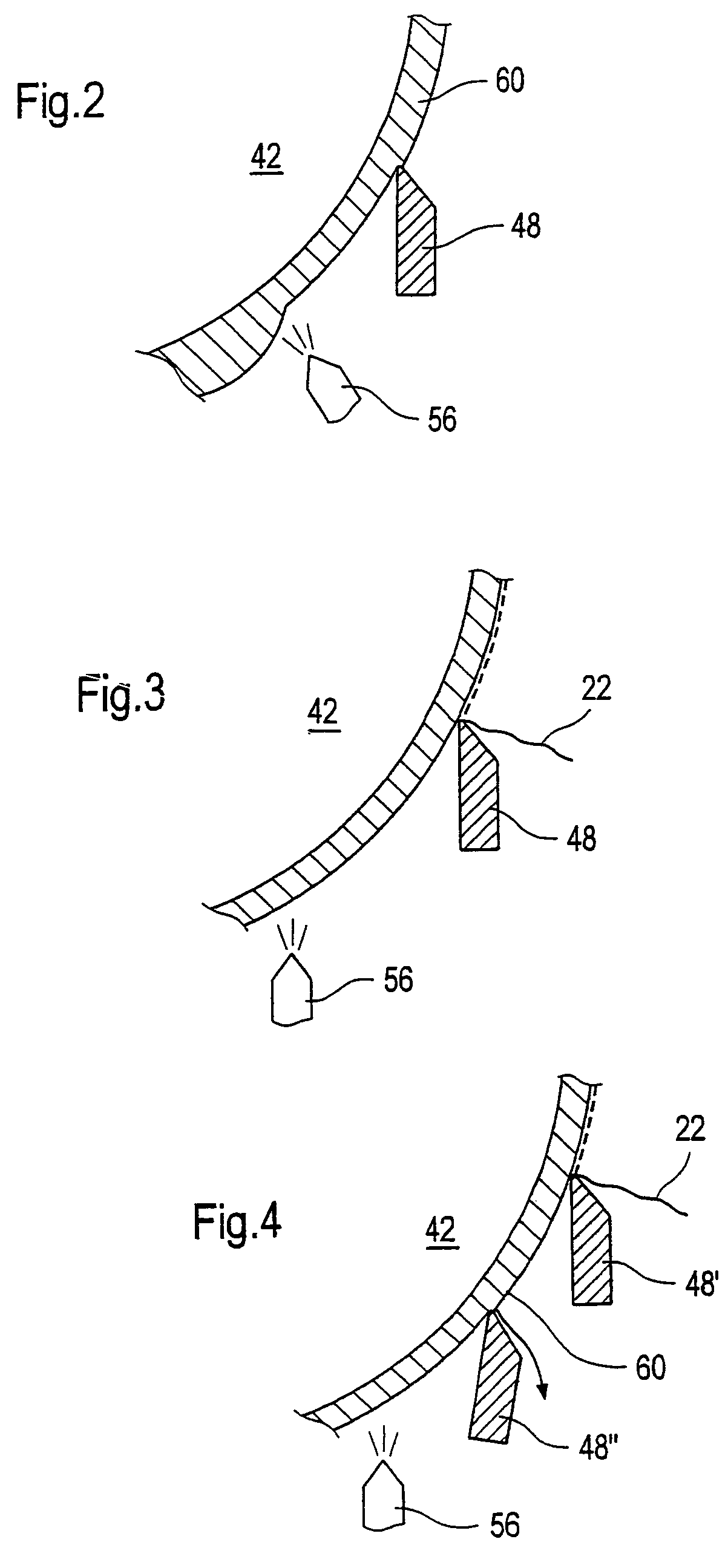Process and apparatus for producing a tissue web
a tissue web and tissue technology, applied in the field of tissue web processing and apparatus, can solve the problems of excessively low dryness, circumferential surface lifting of the tissue web, and problems to occur
- Summary
- Abstract
- Description
- Claims
- Application Information
AI Technical Summary
Benefits of technology
Problems solved by technology
Method used
Image
Examples
Embodiment Construction
[0058]Referring now to the drawings, and more particularly to FIG. 1, there is shown a schematic illustration of an embodiment of an apparatus 10 for producing a fibrous web, which is a tissue web in the present case.
[0059]A headbox 12 delivers a stock suspension jet into an inlet gap 14, which is formed in the region of a forming roll 16 between an inner circulating permeable structured belt 18 and an outer circulating forming fabric 20, which run together in the region of the forming roll 16 and are subsequently led jointly around this forming roll 16.
[0060]The structured belt 18 can be in particular a three-dimensionally structured fabric.
[0061]Facing the tissue web 22, the forming fabric 20 has a side that is relatively smooth as compared with the relevant side of the structured belt 18.
[0062]In contrast, the side of the structured belt 18 facing the tissue web 22 has depressed regions and regions elevated with respect thereto, the tissue web 22 being formed in these depressed a...
PUM
| Property | Measurement | Unit |
|---|---|---|
| pressure | aaaaa | aaaaa |
| permeable | aaaaa | aaaaa |
| adhesive | aaaaa | aaaaa |
Abstract
Description
Claims
Application Information
 Login to View More
Login to View More - R&D
- Intellectual Property
- Life Sciences
- Materials
- Tech Scout
- Unparalleled Data Quality
- Higher Quality Content
- 60% Fewer Hallucinations
Browse by: Latest US Patents, China's latest patents, Technical Efficacy Thesaurus, Application Domain, Technology Topic, Popular Technical Reports.
© 2025 PatSnap. All rights reserved.Legal|Privacy policy|Modern Slavery Act Transparency Statement|Sitemap|About US| Contact US: help@patsnap.com



